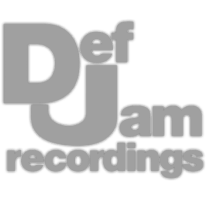Professional Analog Mastering.
Professional Analog Mastering.










EQ is everywhere when making music - it’s present in the timbre of an instrument or voice, the microphone and capsule being used, the position of a microphone, the preamp used, and its settings, even in the sampling rate we use for our session.
Every processing decision you make, every nuance in the performance or dial you turn, will act like an EQ in one way or another. That’s why understanding an EQ and the frequency response that it can so quickly alter is the key to creating pro vocals.
So let’s look at a vocal’s frequency response in-depth, how you can use other processors to EQ, and how it all comes together to create a pro sound.
First, let’s listen to a raw vocal in the context of a mix and pay attention to how it sounds already - how the voice, the mic, and the preamp have already shaped the sound.
Watch the video to learn more >
We hear from 20Hz. to 20kHz, and a vocalist can occupy almost all of these frequencies. The fundamental is the lowest note in any performance - some signal may exist below this fundamental, but it’s likely unmusical and unrelated.
A bass singer can have a fundamental as low as 70Hz. A soprano can have a fundamental as high as a couple thousand hertz, but it’ll likely be a few hundred hertz for the lowest note.
A high-pass filter can be used to attenuate to right below the lowest fundamental - with that in place, we’re left with only musical aspects of the vocal.
The fundamental to a few hundred Hz. creates a sense of fullness and body - but if it’s too high in amplitude, it’ll cover up or mask delicate higher frequencies, reducing clarity. Too low, and the vocal sounds empty.
The area around 500Hz is occupied by resonances from the vocalist’s chest cavity and vowels, like A and E - making it an important region if clear pronunciation is required for a song. Too little and it can be hard to discern lyrics; too much and the vocal sounds unnaturally boxy like it’s being sung through a tube or resonator.
Higher resonances, typically from the nasal cavity, reside above this - between 800 and 1.3kHz. They’re required for a balanced or natural sound but can also make a vocal sound nasally if not controlled.
Our ear canals amplify 2-5kHz - making it the range to which we’re the most sensitive. When a vocal’s 2-5kHz is balanced, it’ll sound clear, upfront, intelligible, and natural. If it’s too high, it’ll quickly become harsh or shrill. Too low, and it sounds unclear, or buried as if the singer has their hand in front of their mouth.
From the top of this range to about 12kHz, we have the percussive aspects of consonants. Think T’s, C’s, K’s, Esses, and so on.
Like vowels, these are important for pronunciation - too little, and it’ll be hard to discern what the vocalist is saying; too much, and the vocal sounds shrill, harsh, and unnaturally percussive.
Above this, we have air - a very low amplitude but pleasant range that includes the vocal’s highest harmonics and reflections from the room. Added air can give a vocal an ethereal and clean quality, too little, and the vocal has a darker sound - neither option is inherently good or bad.
With these ranges understood and what can happen when we have too much or too little of them, let’s listen to each range isolated, including what was attenuated by our high-pass filter.
I’ll also amplify and attenuate each range so we can hear what happens when they’re too prevalent and too quiet.
Watch the video to learn more >
Harmonics give a sound its timbre. That’s why if a vocalist and a trumpet hit the same note, we can easily discern the 2.
Their fundamentals may be the same, but their harmonics differ in both amplitude and order.
Although harmonics have a distinct psychoacoustic effect, they can also be thought of as narrow EQ bands.
Each harmonic occupies a small frequency range and amplifies this range like a narrow bell filter. But whereas an EQ amplifies from the loudest parts up, a harmonic is generated from the noise floor or the quietest parts up.
So, think back to our important ranges - what could we do if we want more of a range? We could amplify it with an EQ, or we could introduce harmonics within that frequency range.
Say the vocal lacks clarity - I’d need to amplify 2-5kHz. With a saturator isolated to this range, I can do just that, but with harmonics.
To illustrate this idea, I’m going to attenuate the vocal’s clarity purposefully. With a saturator, I’ll utilize harmonics to amplify the buried range, balancing the vocal.
Then, we’ll listen to the range amplified with an EQ and notice that in both cases, the vocal is balanced, but the timbres vary slightly due to the different methods used.
Watch the video to learn more >
The best example I can give you for using compression as EQ is a de-esser. It attenuates a specific frequency range to reduce the amplitude of sibilance - odds are you’ve used one before.
Look at this frequency response of a vocal with a lot of sibilance. Notice the spike of high frequencies that occurs periodically.
Watch what happens when I enable the de-esser. The de-essed range is now attenuated. Here, you can easily see how the vocal is equalized by our frequency-specific compressor.
Like the saturator, this has a different sound than traditional EQ. Whereas equalizing this range would create static attenuation, a de-esser uses dynamic attention - when it’s engaged, the vocal is equalized; when it isn’t, the vocal is not equalized.
You know what a de-esser sounds like, so let’s move on to…
Watch the video to learn more >
Reverb can both amplify and attenuate a frequency range - it can amplify the overall range while attenuating the initial attack and decay of a signal.
For example, say we reverberate a vocal’s highest frequencies from 5kHz to 20kHz. We’re adding reflections, which would increase the overall level.
But what if the beginning of the vocal, like a consonant T, K, S, etc., is reverberated?The multiple reflections blend together, softening the percussive sound, and reduce its amplitude through phase cancellation, even if the overall range is increased in amplitude
To retain consonants while reverberating the range, I could set a higher pre-delay to let the consonant through before the reverb kicked it - making the reverb solely additive.
Let’s listen to reverb on a vocal, first with a 0ms pre-delay - notice how percussive sibilance is reduced, but the overall range is amplified. Then, we’ll listen with pre-delay increased to retain the consonant’s percussion.
Watch the video to learn more >
This illustrates that processors are not separate - they affect seemingly unrelated parts of a signal, most often the frequency response. When you equalize your vocal, you can EQ with an EQ, a saturator, a frequency-specific compressor, and even a reverb.
And this video barely scratched the surface - so many other variables and processors can and often do affect the frequency response of our vocals.
I’m going to create a quick vocal chain starting with subtractive EQ, compression, de-essing, saturation, reverb, and lastly, additive EQ.
I’ll use the ideas covered here to amplify or attenuate important ranges as needed - not relying solely on EQ to change my vocal response.
As I enable the processors one by one, please pay particular attention to the vocal’s frequency response.